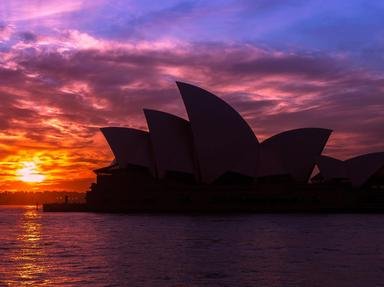Quiz Answer Key and Fun Facts
1. Who were the first Europeans to sight Australia?
2. Where did Captain James Cook choose for Australia's first settlement?
3. Which of these ships was NOT in the First Fleet?
4. Who was the first Governor of New South Wales?
5. What was the third British colony in Australia?
6. Where did the Australian Gold Rush begin in 1851?
7. What name is given to the gold miners' revolt of 1854?
8. Australia became a federation in 1901. Where was its first seat of government?
9. In what year were the entire Aboriginal population given the right to vote throughout Australia in federal elections?
10. Which Prime Minister was dismissed by the Governor-General in 1975?
Source: Author
Midget40
This quiz was reviewed by FunTrivia editor
bloomsby before going online.
Any errors found in FunTrivia content are routinely corrected through our feedback system.


